- Essay
headings-Afghanistan history, Accession of NWFP to Pakistan, Hindu Exodus from NWFP
& Observations. It includes History of Afghanistan from Hindu rule to 1947,
Hindu Pashtuns, Swat region, Are Pathans Pashtuns, Rohillas & why did
British create NWFP? Would NWFP be better if there was no Hindu exodus?
Pakistan and Pashtun ruled Afghanistan fight again. The Afghan Foreign Minister visited India in October 2025. The Pashtun are (PHT) divided into two, some in Pakistan (PAK) while rest in Afghanistan (AFG). Yet, they are one. Pathan is a Hindustani word for Pashtun.
In all this, we forget there were Hindu Pashtuns too. Years ago, Sanjana Kapoor daughter of late actor Shashi Kapoor said in an interview that the Kapoors were Pashtuns. That stayed with me. A search states, “The patriarch of the film family, Prithviraj Kapoor (father Basheshwarnath Kapoor), was born in Samundri, Punjab (now in Pakistan). However, the family's roots trace further back to Peshawar, a city with a significant Pashtun population.” This Open
article says Kapoors were Hindu Khatris (Kshatriyas).
It is true that the Kapoors hailed from Peshawar, earlier name Purushapura ("City of Men" in Sanskrit). It is located near the Khyber Pass and was once the capital of Gandhara. Kapoors were Hindu Pathans and Khatris.
We
must remember that NWFP and Afghanistan have a shared past. This region lies at
the cross roads of Central and West Asia and the Indian Subcontinent. Kabul is
just 50 miles from the border of Kurram Agency in NWFP.
Essay
is under four headings-Brief history of AFG and NWFP, Accession of NWFP to
Pakistan and Hindu Exodus/Riots in NWFP and Observations.
1. Background to Afghanistan and NWFP History
AFG
area territory was part of Persian and Mughal empires Modern day AFG was founded
by Ahmad Shah in the 18th century. The independent kingdom of AFG
came into being in 1926.
Hindu rulers once reigned over Eastern Afghanistan, including Kabul. “Islam entered Afghanistan in the 7th century. The Zunbil dynasty is believed to be the earliest Hindus who ruled over Kandahar to Ghazni regions of Afghanistan, from 600 to 870 AD. Later the Hindu Shahi dynasty ruled. They were replaced only by the end of the 10th century by Ghaznavids.” Source Indian Express
In the 7th
century the kingdoms of Kabul and Zabul were politically and culturally part of
India. 4 Pg. 26 Of the land routes,
the Khyber Pass was guarded by Kabul and Zabul while the Bolan Pass was
protected by the Jats. It was only
in 870 A.D. that the kingdoms were captured by Muslims. Kabul may have become
part of the Hindu Shahaiya kingdom again.
Further, this article in Speaking Tree states, “In 980 C.E. Afghanistan was also a place where the people were Hindus and Buddhists. The name "Afghanistan" comes from Upa-Gana-stan which means “the place inhabited by allied tribes.” (Sanskrit) The region was home to many Shiva temples and Buddhist shrines. Also read HAF art and Peepul Tree
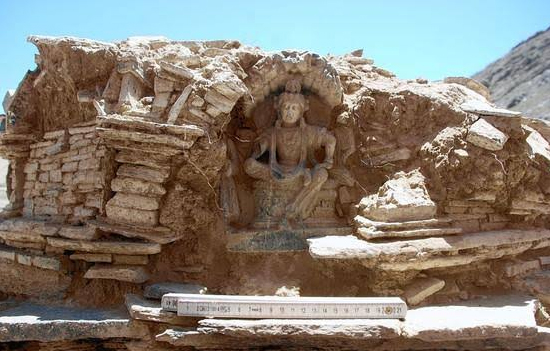 Ruins of a Shiva Temple in AFG. Note 1.
Ruins of a Shiva Temple in AFG. Note 1.
What happened post 10th century?
“The Ghaznavid Dynasty became the first great Islamic dynasty to rule in Afghanistan. In 1220 all of Central Asia fell to the Mongol forces of Genghis Khan. Afghanistan remained fragmented until the 1380s, when Timur consolidated and expanded the existing Mongol Empire. Timur’s descendants ruled Afghanistan until the early sixteenth century. Then it came under Mughal control. Ahmed Shah Abdali, known as founder of the Afghan nation, built empire in 1760.
Thereafter, it became part of the Great Game between Russia and Britain. It achieved Independence in 1919. Amanullah Khan ruled (1919-1929). In 1933 Amanullah’s nephew Mohammad Zahir Shah, the last king of Afghanistan, began a 40-year reign. In 1973 Prime Minister Daoud overthrew the king and established a republic.” eSamskriti
article
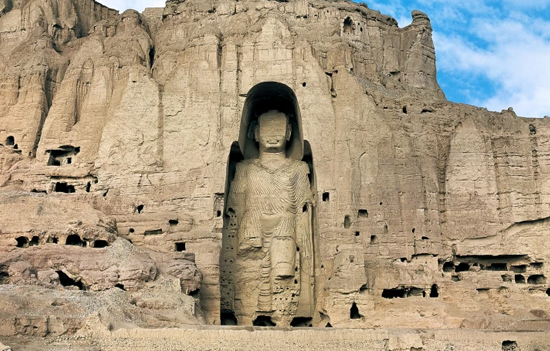 Buddha statue once existed.
Buddha statue once existed.
Sikhs and Afghans early 19th century
Since the British could not deal with the Afghans they used Sikh soldiers because Sikhs had defeated the Afghans during Ranjit Singh’s time. After a campaign of nearly 2 years, RS defeated Afghans in
Kashmir to gain possession in 1819. Former governor of Kashmir Azam Khan
declared holy war against RS. The Sikhs and Ghazis fought a pitched battle with
Sikhs emerging victorious in 1823. Ranjit Singh entered Peshwar in triumph. eSamskriti
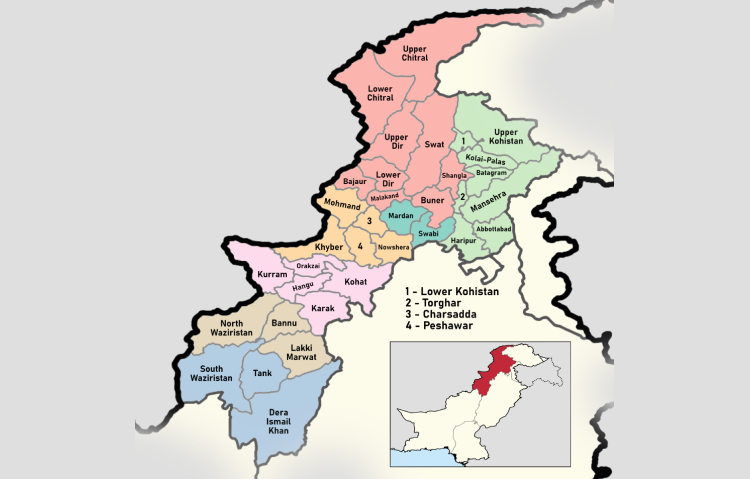 Khyber Pakhtunwaha borders Afghanistan, Baluchistan & Punjab.
Khyber Pakhtunwaha borders Afghanistan, Baluchistan & Punjab.
What area constitutes the North West Frontier Province (NWFP) of
Pakistan? Called Khyber Pakhtoonkhwa since 2018, provincial capital is Peshawar.
According to National Army Museum site, “The NWFP became part of
British India in the aftermath of the Second Sikh War (1848-49). Following its victory in that conflict, the British East India Company annexed Punjab. In doing so, it also became responsible for frontier regions with Afghanistan, which had been part of the Sikh Empire’s territories. This frontier
zone became NWFP in 1901.
The NWFP was divided into a so-called ‘settled area’ that came under direct British rule (FATA), and a largely autonomous ‘tribal area’ directly adjacent to the Afghan border that was free from the trappings of colonial rule, such as courts, police and taxation.” Both merged into Khyber Pakhtoonkhwa in
2018.
Khan Ghafar Saheb
wanted border states of Dir, Swat and Chitral to become part of NWFP. Today
they are.
According
to a Map in 4 NWFP includes
Wazaristhan, Tribal Territory, Kohat, Chitral, Dera Ismail Khan, Peshawar, Bannu,
Swat (close to Hindu Kush Passes).
The NWFP border with Afghanistan was
formalised in 1893 known as Durand Line. The Afghans formally repudiated the agreement
in 1979. The region controlled by various tribes.
Where is Swat region in NWFP?
Between
Hindu Kush and plains of Peshawar lies the Swat Valley, on the banks of river
Swat i.e. a tributary of the Indus. It was once a seat of Buddhist culture. Chandragupta Maurya was the only Indian ruler who protected India’s frontier till Hindu Kush. He drove out the
Greek garrisons from the region. 4
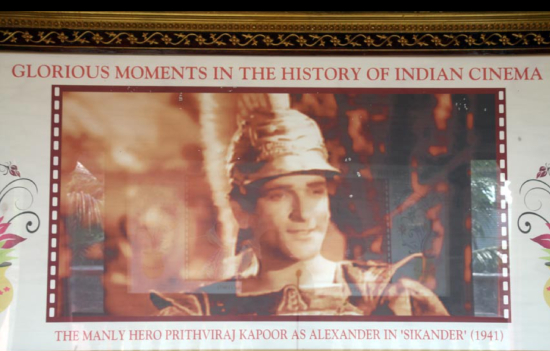 Hindu Pathan Prithviraj Kapoor in movie Sikander. Pic at Museum in MIT, Pune.
Hindu Pathan Prithviraj Kapoor in movie Sikander. Pic at Museum in MIT, Pune.
Pashtun Tribes
“Many Pathan tribes, such as the Afridis, Orakzais, Mahsuds and Waziris, fiercely resisted British-Indian forays into their territories. Until the end of British rule in 1947, the tribal areas remained largely autonomous.” The Wazirs and Mahsuds are the two main tribes of
Waziristan.
The
Mullagoris are a Pashtun tribe that live in the Khyber region and are believed
to be one of the tribes that descended from M of Ghori. 4 Pg. 284 Landikotal lies on the Khyber Pass. The Afridi tribe did not wish to be ruled by Hindus and had resented Nehru’s 1946 visit to NWFP. 4 Pg. 156
Governor
Caroe 1946-47 wrote that Pathan tribesman are intolerant and resistant to
control by any outside authority. 4
Pg. 218 He added that leave the Pathan to nationalism of his own. 4 Pg 225.
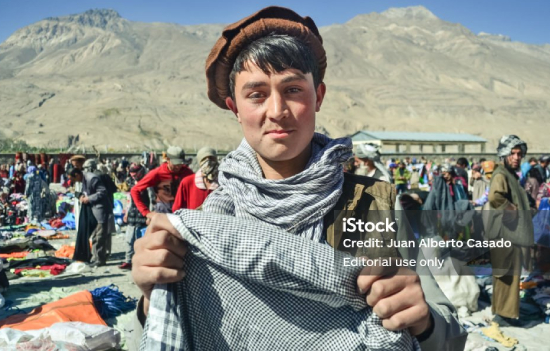 Modern day Pashtun.
Modern day Pashtun.
Are Pathans Pashtuns?
A search indicates, “Yes, Pashtuns and Pathans are the same ethnic group; Pathan is the local, Hindustani term for
Pashtun. Pathan is a term used in India
and by people outside of the Pashtun homeland to refer to the Pashtun people.” Pashtuns are united by their language Pashto, Sunni Islam and social codes. To read more They live in AFG and PAK. In Pak they live in
areas North of Quetta (Baluchistan) and Khyber Pakhtunkwha.
The term ‘Malik’ is used in AFG and tribal areas of Pakistan esp. among Pakhtuns, for a tribal leader or Chieftain. 4 Pg.
283
Who are Western (Afghan) and Eastern Tribes (Pathan or Pashtuns)?
Western Afghans being closer to Persia were Persianized. Eastern Afghans retained Pashtu as their language and had a bias towards Delhi. Pathan, a “Pakhtun appellation” is used for eastern tribes and Afghan for western tribes.
Since the Taliban
are mostly Pakhtun they might have an affiliation for Delhi. It was not visible during the IC814 Kandhar
Hijack of 1999 but may be visible now.
Why did the British create a Tribal Areas zone in NWFP?
The
British used AFG as a buffer state to halt the Russian advance at the great
barrier of Hindukush. Pashtuns were that buffer.
The British wished to create a buffer area with Afghanistan hence tribal areas zone, a no-man’s land, where the writ of British India did not run. This came into being when NWFP was carved out of Punjab in 1901.
Third Afghan War of 1919 triggered tribal raids that increased in the next few years. Victims were mostly Hindus who believed their Muslim neighbours were party to it. Most Hindus/Sikhs opposed the NWFP’s (Muslim majority) creation because it cut them off from Punjab’s large non-Muslim population. 4 Pg. 115 Just
like many opposed the delinking of Sindh from Bombay Presidency in 1936.
Who are the Rohillas?
Rohillas “were Muslim highlanders of Pakhtun origin. The term Rohillas used for all Pakhtuns except for the Bangashes, who settled in Rohilkhand region.”4 Pg80
Rohilla
Afghans of the Doab and Shuja-ud-Daula of Oudh supported Ahmad Shah
Abdali. Malhar Rao Holkar fought against Rohilla leaders like Bahadur
Khan Rohilla & Ahmed Khan Bangash during Battle of Farukhabad
1751-1752.
A search shows, “The Rohilkhand region is located in the northwestern part of the Indian state of Uttar Pradesh. It is centered around the cities of Bareilly and Moradabad. The region is
part of the upper Ganges Plain and gets its name from the Rohilla tribe, who are of Pashtun (Afghan) descent.”
During recent trip, AFG Foreign Minister visited Darul Uloom Deoband (in Saharanpur district of Uttar Pradesh). “After India’s partition, a similar seminary was established in Pakistan’s Khyber Pakhtunkhwa, called the Darul Uloom Haqqania. It was at the Deobandi madarsas in Pakistan where the ideological foundations of the Taliban were first laid.” Indian Express
Cunningham, Governor of NWFP from 1937 to 1946, reappointed in
August 1947
Cunn
won tribal chiefs with open allurements. Because of his efforts the Frontier
remained quiet for the six years of World War II. On 22/8/1947 he dismissed Dr
Khan Saheb ministry. In October 1947, infiltrators from tribal areas of NWFP
headed to Kashmir complicating matters.
What is the Wakhan Corridor?
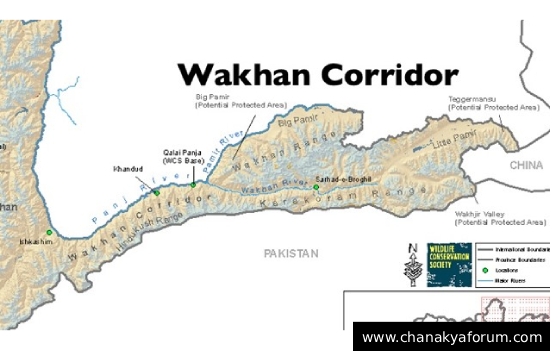
This
corridor connects Northeast of Afghanistan with China and separates the Gorno
region of Tajikstan from the NWFP and northern areas of Pakistan. 4 I recall reading Pakistan’s desire to capture Wakhan Corridor. Jamrud town is the doorway to Khyber Pass and part of the Hindu Kush range.
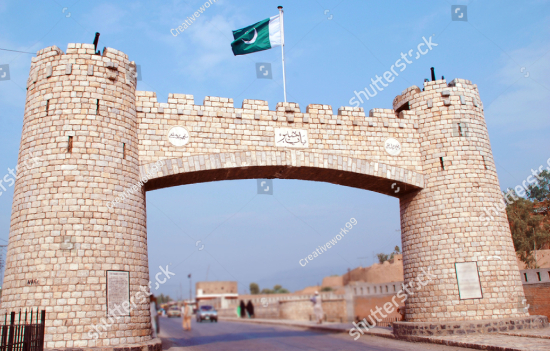 Peshawar Landmark,
Khyber Pakhtunkhwa.
Peshawar Landmark,
Khyber Pakhtunkhwa.
2. Accession of NWFP to Pakistan. What happened in 1946-47
briefly?
Nehru’ trip in 1946 signalled the decline of the Congress in NWFP.
Khan Abdul G Khan founded a pan-Paktun organization Khudia Khidmatgars. It rested on the tenets of – unity of Pakhtuns, the spirit of Islam and non-violence. He had an English wife. Khan passed away in 1988.
Note
that inspite of Muslim League efforts the Congress was victorious in the 1945
state elections. This implies that the Pathans had largely remained unaffected
by the fear of Hindu domination.
Victory of the Congress government in 1946 upset calculations. One of Jinnah’s first executive decrees on becoming Governor General was to dismiss the elected cabinet of NWFP i.e. Dr Khan Saheb’s ministry. A Muslim League one followed.
In
Muslim majority NWFP, the upper classes were conservative and thus pro-League.
For others, Muslim communalism was converted into Pakistani nationalism. 4 Pg. 248 Besides lawyers, landlords a third element that infused strength into the Frontier Muslim League were the ‘Sajda Nashins’ religious men.
The
British announced withdrawal from on 3/6/1947. As part of that, NWFP was to
hold a referendum to decide whether India or Pakistan. Option of an Independent
Pathanistan was not given. 4 Pg. 234 Nehru opposed third option.
Pg. 273 whilst Frontier Congress and Gandhi wanted it. Pg. 276
In
early 1947 Pirs from Punjab and NWFP started touring NWFP drumming up support
for the Muslim League/Pakistan. The ulema criticised Dr Khan Saheb’s Congress ministry for prohibiting conversions. “The agitation was coming full swing in strongly fortified and predominantly Hindu towns.” 4 Pg. 291
During
the referendum of 1947, the League accused Hindus and Sikhs of being Kafirs for
not having voted to create a Muslim nation. 4 Pg. 181
‘The situation, communally, had turned sensitive. A non-cooperation movement started by Muslim League resulted in anarchy. In March a number of stabbing and shooting incidents took place in Peshawar. On 19/3/1947 2000 Khudia Khidmatgars arrived in Peshawar to restore confidence among 30,000 Hindu and Sikh residents.’ 4 Pg. 292/376 With hardly any Hindu population left, one can assume they either
converted or migrated to Punjab.
Before
the referendum was conducted in NWFP, there was an influx of Punjabi and
non-frontiers Muslims into NWFP. The non-Muslim population was threatened with
dire consequences if they took part in the referendum. 4 Pg. 321
Changing
demographics is something independent India is seeing since 1947. These events meant
an exodus of Hindus from NWFP started.
Nehru
failed to convince the Khan brothers to take part in the referendum. The
Frontier Congress boycotted the election Results decision was pro Pakistan.
Different Stand - The CWC had supported Assam CM G Bardolio when he demanded the right to opt out of the ‘Eastern Grouping of Muslim Provinces’, as also the right of Gurdaspur for Indian Punjab but on 1/5/1947, the Congress Working Committee accepted Partition. The decision disappointed Khan Abdul Ghaffar Khan. On 8/6/1947 Khan informed Gandhi his party and followers wanted a free Pathan state within India but that was not to be. On 20/6/ a meeting of Pashtun organised organised by Khan adopted a resolution that a Free Pathanistan of all the Pakhtuns be
established.
On
14/8/1947 NWFP became a part of Pakistan, when ironically it had a Congress
ministry that was dismissed on 22/8/1947.
Afghanistan expresses interest in Pashtun areas becoming part of
Pathanistan.
Sir
Giles S, in-charge of the British Legation at Kabul, had written to the Foreign
Secretary in Delhi that, post meeting Afghan government ministers, suggesting
that the tribes should be given complete independence or become part of AFG. 4 Pg. 413.
The
Afghan media uniformly expressed unhappiness of the NWFP referendum giving
people choice of an independent Pathanistan and wanted matter referred to the
United Nations.
The
Afghan Foreign Minister called the Secretary of State in London asking for the
territory to become part of Pakistan or an independent state. 4 Pg. 415
The
British responded by threatening AFG with the cutting off of aid if the AFGs
persisted with their claims on NWFP notwithstanding the ties of kinship,
history, religion, race and language of Pashtuns on both sides of the Durand
Line.
Ironically,
the British did not take the Pathanistan
demand to the United Nations but advised Nehru to take the Kashmir matter to the
U.N.
If the British had heeded the Afghan government’s request then, history of region would have been different.
Would Pashtuns have been happier with PATHANISTAN?
The British and Muslim League ensured NWFP became part of Pakistan. If NWFP had become part of India, how would things have panned out is difficult to say. Distance would not
be an issue because Jinnah had agreed to West and East Pakistan (Bangladesh).
Should India support the creation of Pashtunistan?
Aside - When Hindu
Punjabis migrated from NWFP, it might invariably be to Punjab. When Partition
happened in 1947, they migrated to India and known as Punjabis today. Is that the reason why Punjabis always ask, where are your forefathers originally from?
3. Attacks on Hindus and Exodus
“The bloodletting at Dera Ismail Khan, Hazara and many other places resulted in an exodus of Hindus and Sikhs from NWFP.” 4
Pg X
A former diplomat told me his father’s ancestors moved from Ghazni to Peshawar centuries ago when Muslims took over Ghazni. His father moved to Delhi years before Partition 1947. Today he is a Punjabi Sanatani.
Serious
riots broke out in Peshawar in 1930.
In
1936, a young Hindi girl Ram Kaur, from a village near Bannu converted to Islam
and married a Muslim. It resulted in Muslims clashing with the local government
with a Fakir being the leader. The victim of lascar raids by the Fakir were
mainly Hindus. 4 Pg. 112
Communal
riots broke out in Peshawar and Hazara in December 1946. As always, it resulted
in a Hindu exodus from the frontier. 4 Pg.
361/375 Also, a food shortage resulted in riots resulting in death and
conversions of Hindus/Sikhs.
Post
police firing on Muslim League workers in Peshwar (March 1947), Hindus/Sikhs
were targeted, stabbed and Gurdwaras burnt in Hazara and forceful conversions. 4 Pg. 227/376
Around
mid-April 1947 riots broke out in Dera Ismail Khan where the Hindu Muslim
population was about 50-50. 4 Pg. 231
August 1947 – Haripur witnessed turmoil post 14/8/1947. 300 Hindus were killed, several temples and gurdwaras ransacked. In early September Sikhs were attacked in Peshawar city. For nearly twelve hours non-Muslims fought bravely, some women committed suicide. 4 Pg
376/377
Dr Ambedkar gives details of Hindu Muslim riots during 1920 to
1940
In the aftermath of Gandhi’s efforts at Hindu-Muslim unity during the Khilafat Movement Dr. Ambedkar examined Hindu-Muslim relations between 1920 and 1940 in Thoughts on Pakistan (1941). Here are
excerpts about NWFP-
1923-24
Riot in Kohat City (murder, arson, loot). Hindus evacuated the city, other
riots too. 6 Pg. 160.
In
1927, the Afridis and Shinwaris were asked to expel all the Hindus living in the neighborhood of the Khyber Pass.
About 450 Hindus left the Khyber, of these about 330 returned to their homes in
tribal territory by end 1927. 6 Pg. 166/7
Remainder settled in more secure places of British India.
1927-28
Between April & Sept 25 riots were reported in Punjab etc. Most serious
report was in Lahore. Also economic boycott was freely advocated in the British
frontier districts but the movement met with little success. 6 Pg. 164
1933-34
Communal tension kept on increasing. Riots occurred at Benaras, Lahore, Peshawar, Ayodhya, and Cannanore in
Madras etc. 6 Pg. 175
The
Muslim League gave exaggerated versions of H-M riots in other parts of India in
order to make people of NWFP support idea of Pakistan. It was assumed that the Hindu was the aggressor. The
same attitude exists in post independent India. And forever playing Victim
Card!
4. Observations
1.
When Islam becomes dominant in a region, Hindus just move out.
2.
Islam has failed to unite Sunni Muslim Pashtuns and Punjabis of Pakistan.
3.
Reality of Hindu and Muslim co-existence requires Hindu population to exist in
much larger numbers.
4.
The forced exodus of Hindus from NWFP needs to be widely told.
5.
A state of Pathanistan could be a solution to the AFG-PAK impasse.
6.
India must remember the treatment of Hindus in NWFP and AFG whilst accepting the
current situation that requires it to align with a Taliban government to avoid
giving Pakistan strategic depth.
7.
In 1947 Afghanistan expressed interest in
Pashtun areas becoming part of Pathanistan. Does it have the same stand in 2025?
Would Afghanistan and NWFP be in the situation they are in had the region, like earlier, been inhabited by Hindus?
For
an easy answer compare the state of Bharat and Pakistan today.
eSamskriti is grateful to Shri Raghvendra Singh for writing book on NWFP and publishers Rupa Publications Pvt Ltd. We are also grateful to SMART for co-supporting the esamskriti knowledge sharing effort.
As always am happy to stand corrected.
Also read and
References
1.
Why is Baluchistan
important for China
2.
U.S. withdrawal
from Pakistan
3.
History of
Afghanistan
4. India’s Lost Frontier, the North West Frontier Province (NWFP) of Pakistan by Raghavendra Singh
5.
Why is BALUCHISTAN
important for CHINA
6. The Pathans by Sir Olaf Caroe
7. Thougths on Pakistan by Dr Ambedkar
8. Did Hindu Muslims
always live in peace
9. Why
Democracy has failed in Pakistan
10. Why
Hindus give importance to Education
11. Why
Akhand Bharat is a Bad Idea
12. Raj Kapoor Museum, Pune - MUST VISIT
Note 1 - When I wrote about Shiv Mandir in Afghanistan in 2021, I
had got this picture from think an article in Speaking Tree. Sadly, that link
no longer appears. However, this picture appears on this Link and Reddit
link